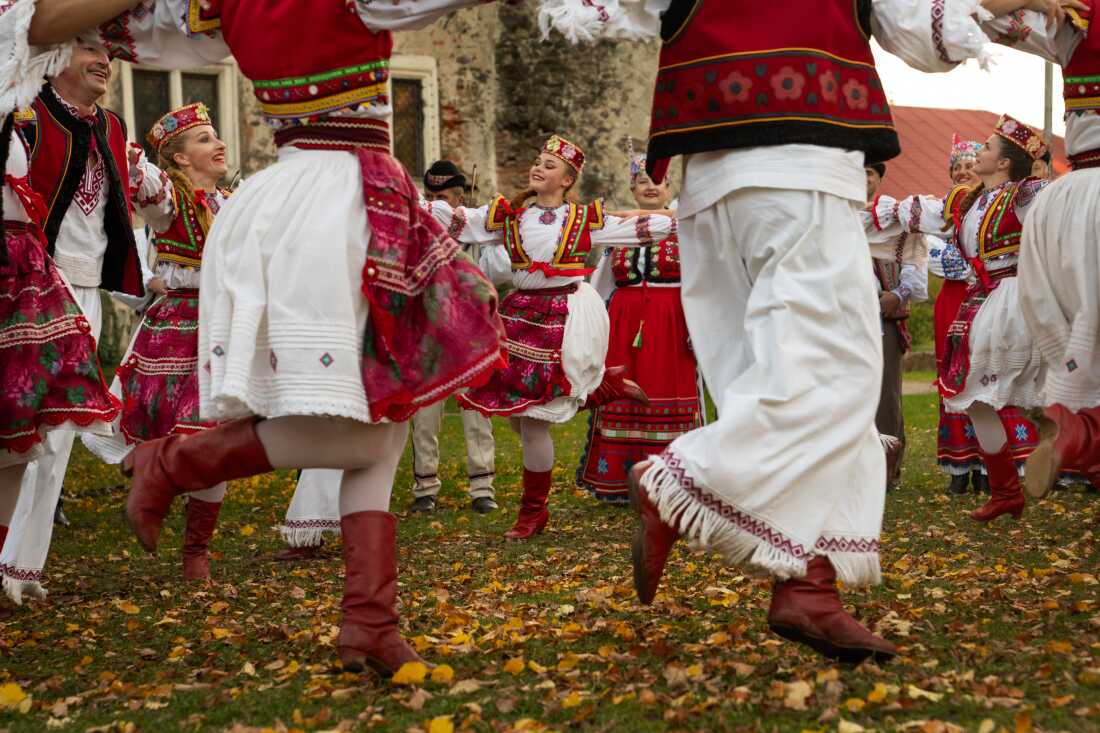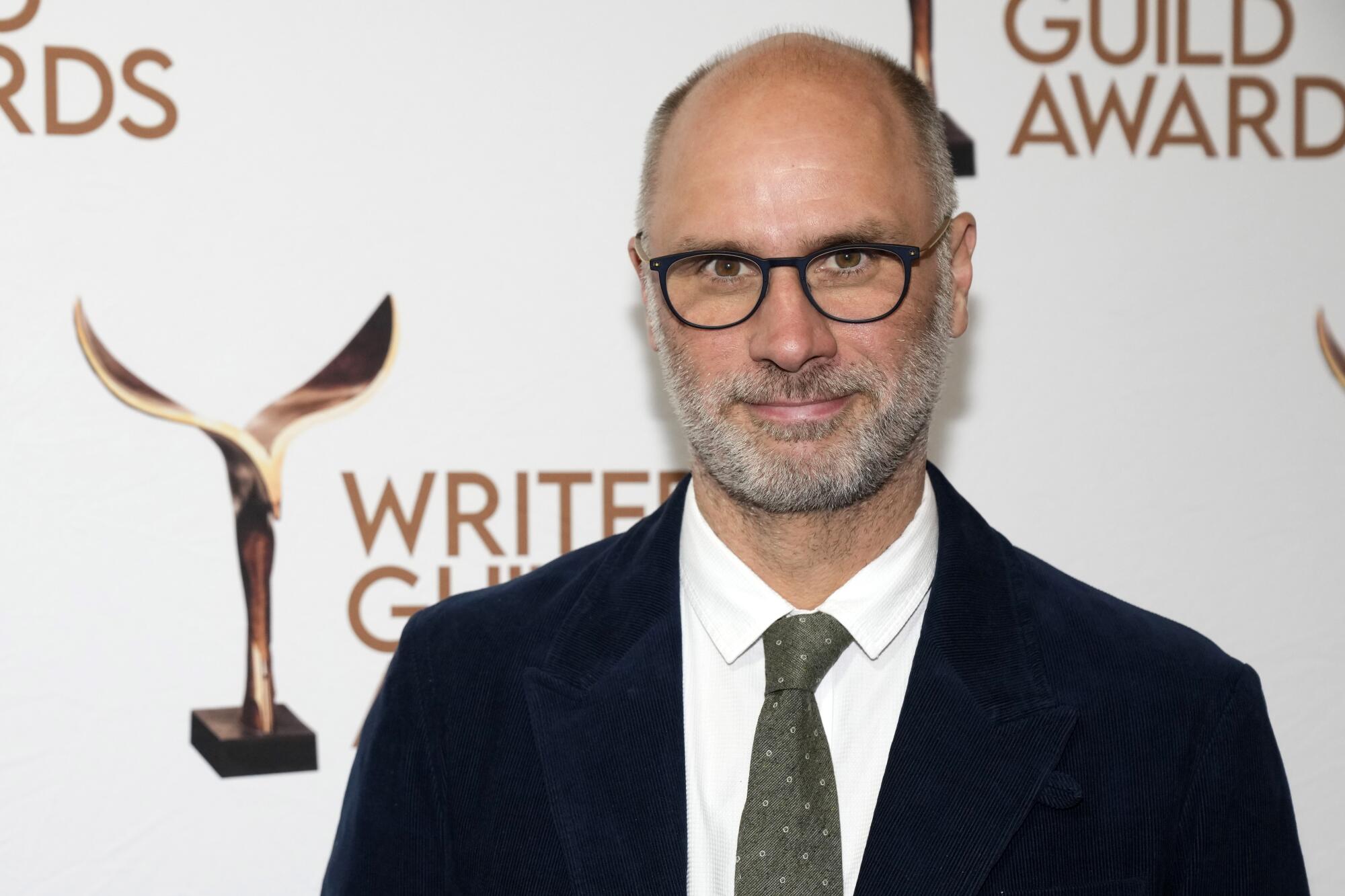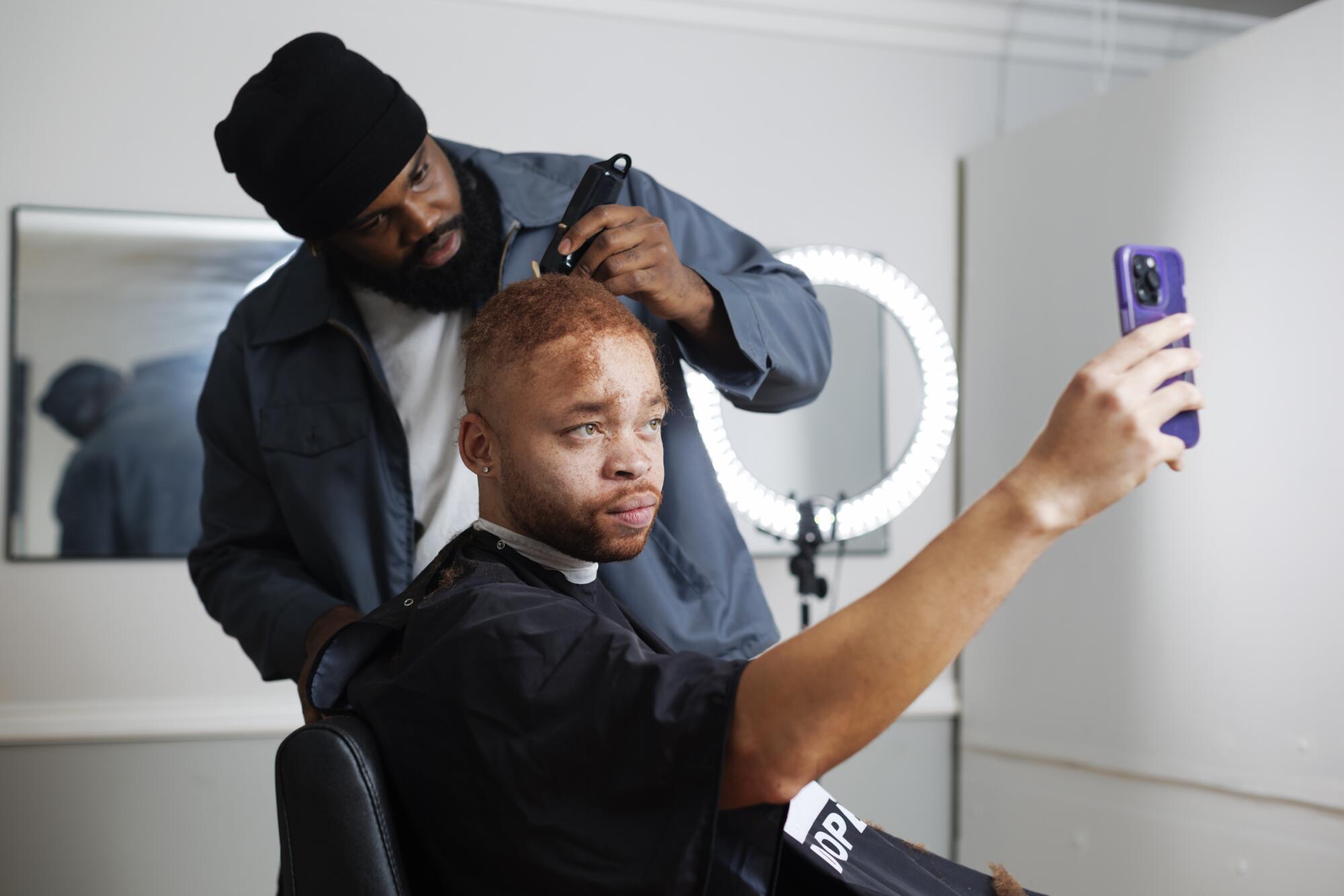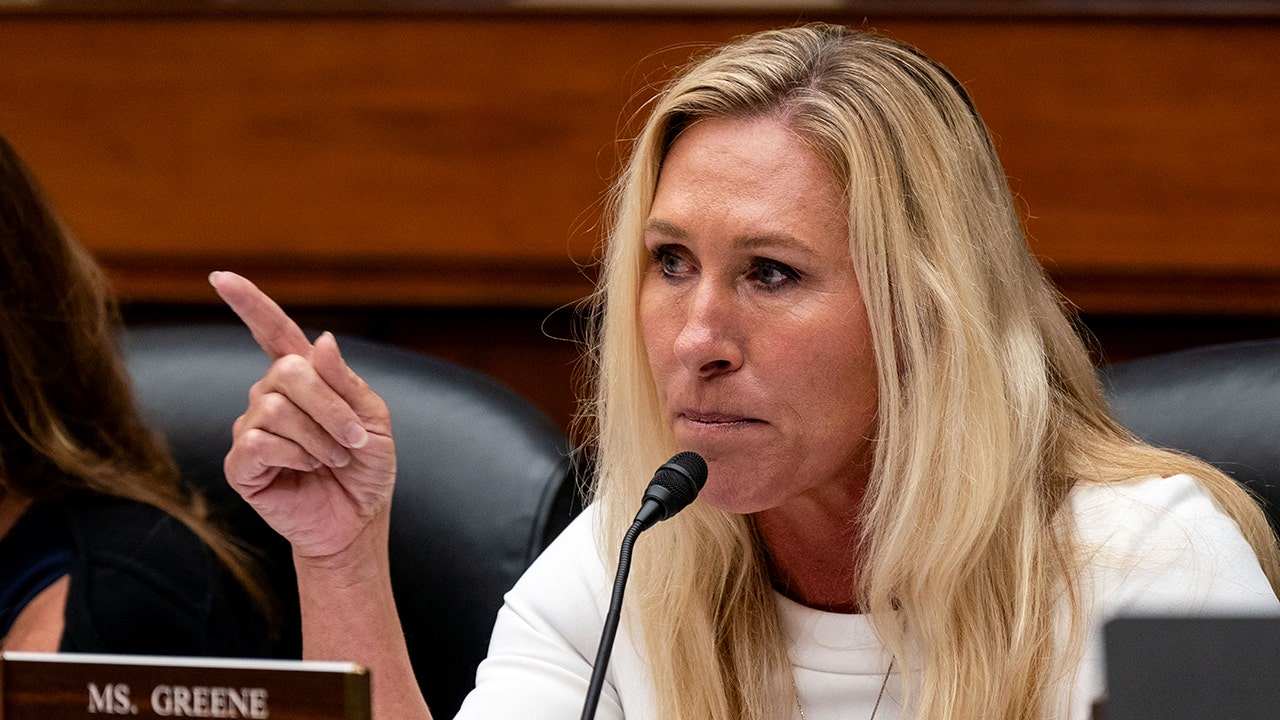Lifestyle
Famed Coney Island Cyclone roller coaster is shut down after mid-ride malfunction
NEW YORK (AP) — The famous Coney Island Cyclone roller coaster in New York City was shut down indefinitely after coming to a stop mid-ride this week.
The 97-year-old wooden roller coaster at Luna Park was on its ascent on Thursday when ride operators took it out of service due to a damaged chain sprocket in the motor room. The operator stopped the ride and several people were removed from the roller coaster without injury, according to New York City’s Department of Buildings.
Video posted on social media shows a person being carefully escorted down the tracks.
Inspectors with the buildings department were at the scene Friday and issued the owners of Luna Park violations for the damaged equipment and for failure to immediately notify the department about the incident.
A posting on Luna Park’s website Sunday said the Cyclone will reopen when the repair is complete and the ride passes inspection.
“At Luna Park in Coney Island, safety is our number one priority and ride maintenance, and thorough testing happens daily before Luna Park opens and throughout the day as necessary,” the statement read. “The Coney Island Cyclone is a 97-year-old roller coaster that is meticulously maintained and tested daily.”

Lifestyle
Far from the front lines, Ukrainians fight a war to preserve their culture

In a remote region of western Ukraine, far from where the violent conflict of war with Russia is taking place and destroying human lives, Ukrainians are fighting a different type of battle: for culture and dignity.
In this area of Transcarpathia, a historical region in Eastern Europe that is now primarily part of modern-day Ukraine, there are local residents holding onto their history, traditional lifestyle, crafts and cultural identity. After coming under threat during Soviet times, they face stark new dangers. Since Russian President Vladimir Putin launched a full-scale invasion of Ukraine in February 2022, Ukrainians have feared that he is determined to wipe out their culture and statehood. Millions of Ukrainians have left the country. Many others have joined the army — with many killed on the front lines — and war efforts have soaked up people’s energy and resources. As they defend their territory from advancing Russian forces, many in Ukraine are also fighting to preserve a cultural heritage in peril.
The Transcarpathian Folk Choir performs a song and dance for a music video that they are working on to share their music. Ukraine’s St. Miklos Castle, which is now an arts exhibit space, a meeting place and museum for local history, provides the backdrop.
Claire Harbage/NPR
hide caption
toggle caption
Claire Harbage/NPR
Like many in this region, Joseph Bartosh, 67, believes he’s fighting on a sort of cultural front line. “In 2000,” Bartosh says, “my war actually started that year.” That was when Bartosh started his effort to preserve the medieval St. Miklos Castle in the town of Chynadiiovo, Ukraine. When he began the project, the castle was in disrepair. He says he found signs that in Soviet times, it had been used as a horse stable, with a lack of respect given to its history.

St. Miklos Castle in Chynadiiovo, Ukraine, was in disrepair when Joseph Bartosh decided to work on restoring it. He says that during Soviet times, it was used as a horse stable. Even now, more than 20 years since he started the project, there is still more work to be done to preserve parts of the castle.
Claire Harbage/NPR
hide caption
toggle caption
Claire Harbage/NPR

Joseph Bartosh stands in a patch of window light at St. Miklos Castle in Chynadiiovo, a town in western Ukraine. Since 2000, he’s taken on the effort of restoring the medieval castle, whose earliest known mention is believed to be around 1450.
Claire Harbage/NPR
hide caption
toggle caption
Claire Harbage/NPR
With the restoration well underway, the inside has already been transformed into a space for art exhibitions, community events and a museum where people can learn about the castle’s history. During this visit by NPR, the Transcarpathian Folk Choir is performing in the castle’s yard and filming for a music video, as Bartosh closes up for the day.

The Transcarpathian Folk Choir performs a dance while filming a music video.
Claire Harbage/NPR
hide caption
toggle caption
Claire Harbage/NPR
There are instances throughout Ukraine’s history in which the people were spurred into action to preserve their culture. Villagers here remember the Soviet history of Ukraine as a time of erasure of unique regional traditions. Hanna Haiduk recalls her relatives having to hide their embroidered shirts, called a vyshyvanka, to save them from being destroyed by Soviet troops. “People were putting [vyshyvankas] inside of glass jars, sealing those jars, digging holes underground trying to hide those vyshyvankas there. And people were trying to save vyshyvanka for years for the next generations in this way,” Haiduk recounts over tea in her kitchen.

Hanna Haiduk grew up learning traditional Hutsul embroidery techniques. She is part of the Hutsul ethnic group from the Transcarpathian region, which is mainly part of modern-day Ukraine.
Claire Harbage/NPR
hide caption
toggle caption
Claire Harbage/NPR
Haiduk, 60, is from the Hutsul ethnic group, from a village in the Carpathian Mountains called Kosivska. She remembers learning to embroider as a child, alongside her whole community. They would often gather under one large tree in the village to work on communal projects, chatting and laughing together as she and other kids would help, and learning different embroidery techniques as their parents directed them. They embroidered towels, rugs and vyshyvankas.

Hanna Haiduk uses a needle and thread to form intricate designs, many of which she copies from historical works she finds in books or those she saved from her family’s past work.
Claire Harbage/NPR
hide caption
toggle caption
Claire Harbage/NPR
Haiduk passed her love of tradition to her eldest son, Taras. He was a tour guide, showing off regional culture to people from around the world. He was killed while serving in the Ukrainian army, just one month after the war began in 2022, at age 34. He was supportive of her work and, before his death, he was building a website for Haiduk, to help her sell her vyshyvankas. But he never got to finish it, she says. She recounts all this with tears in her eyes.
“The war touches everywhere in this country; it’s a misconception that we are free from it here,” Haiduk says.

Hanna Haiduk does her embroidery mostly at home in Uzhhorod, a city in western Ukraine. She lost her son when he went to fight at the beginning of Russia’s full-scale invasion in 2022.
Claire Harbage/NPR
hide caption
toggle caption
Claire Harbage/NPR
But not every part of the region’s cultural heritage has been successfully preserved, as the war has taken its toll.
Richka is known locally as the village that makes hunias, traditional fluffy wool coats. Olha Mys and her mother and sisters used to make hunias, but the tradition is dying out. Even before the war, Mys says, fewer people were producing and wearing hunias because of how time-consuming and meticulous it is to make them.
“It’s not easy work to do this,” Mys says.

Olha Mys, wearing a fluffy wool hunia coat, and her sister walk near their house in Richka, Ukraine, down to where a valylo is built into the side of a stream. They use the valylo to wash wool and then to wash hunias for hours after they are woven.
Claire Harbage/NPR
hide caption
toggle caption
Claire Harbage/NPR
Making a hunia takes months just to complete one coat. After gathering the sheep’s wool, it is washed and dried in the sun, then combed and woven on a loom that takes up an entire room. The woven fabric is then washed for multiple hours in a valylo, a kind of natural washing machine that people construct on the side of a mountain stream. Valylos can only be used when the stream is very full and the water runs clear to keep dirt out of the materials. The hours of washing in the valylo helps with felting the woven fabric, creating a material that is dense and spongy.

Olha Mys shows a photo of her grandmother wearing a hunia. The tradition of crafting the coats has been in the family for generations.
Claire Harbage/NPR
hide caption
toggle caption
Claire Harbage/NPR

Many people have moved out of Richka, a small village in western Ukraine. Villagers estimate more than half of the population has left since Russia’s invasion of Ukraine in 2022.
Claire Harbage/NPR
hide caption
toggle caption
Claire Harbage/NPR
Adding to the difficulties, the war has shrunk the population of Richka, as people have fled Ukraine altogether. Many people in the village, roughly counting their neighbors, estimate that over half have left since the war started nearly three years ago.
Lubov Hychka, who still occasionally makes hunias, says that this population drop affects the materials she needs for the process.
“All those people that left because of the war, many of them had sheep, even despite the fact they weren’t producing hunias,” Hychka says. “When they left they sold their sheep or rented them to people in other villages, in other areas. Now if you want to start to produce hunia, you don’t have this amount of choice [in wool].”

Wool from local sheep is used in making a hunia.
Claire Harbage/NPR
hide caption
toggle caption
Claire Harbage/NPR

Lubov Hychka demonstrates how to weave the hunia fabric while Vasyl Hychka (unrelated), who takes care of the property where the loom is housed, helps with the rickety old machine.
Claire Harbage/NPR
hide caption
toggle caption
Claire Harbage/NPR
Traditionally, large flocks of sheep used to ramble through the Carpathian Mountains, spending summers on wide alpine meadows while shepherds lived alongside them. Now they dot the area, with usually just a few nibbling on grasses together on the outskirts of each village.

Mikhailo Bilak sits to smoke a cigarette after walking all morning with his flock of sheep. Mykola Yakbuk (right) has come to take one of the ewes and her lambs back to a barn where they can be more closely cared for.
Claire Harbage/NPR
hide caption
toggle caption
Claire Harbage/NPR
Mikhailo Bilak, a man wearing knee-high mud boots, watches over his flock of more than a hundred sheep. He says he and his friend, Mykola Yakbuk, are some of the rare shepherds who still raise sheep in this way, grazing them near the village of Yavoriv.

Mikhailo Bilak holds two lambs while their mother looks on.
Claire Harbage/NPR
hide caption
toggle caption
Claire Harbage/NPR
Even on this remote mountaintop, the war still looms. At 59, Bilak has nearly aged out of the military draft, which goes up to 60, but the country’s mobilization remains a threat.
“Pretty much if they mobilize me, these sheep will be packed immediately for slaughterhouse. Nobody will take care of them,” Bilak says bluntly, before he runs after his moving flock down the mountain, waving goodbye and apologizing at the hasty exit.
A few villages away in Krasnoillya, a small wooden museum is tucked into a valley that curls around a flowing stream, between the pine-covered peaks of the mountains. In the museum, actors who perform Hutsul theater are having a modest feast after rehearsal. A variety of cured meats and cheeses are stacked on thick, buttered slices of white bread.

Vasyl Zhykaliak, 15, and his 11-year-old brother, Dmytro, prepare to rehearse a play at Hutsul Theater.
Claire Harbage/NPR
hide caption
toggle caption
Claire Harbage/NPR
Their kind of theater was created over 100 years ago based on the culture and stories of the Hutsul ethnic group, who live in these mountains. The theater nearly went extinct during both World War I and II, but each time, after a long hiatus, dedicated enthusiasts revived it once the wars ended. During the current war, they have fewer shows and rehearsals, but still on an average Sunday in early November they were able to gather a handful of performers to rehearse.

Volodymyr Sinitovych, director of the Hutsul Theater, greets his son and grandchild outside the small museum in Krasnoillya, where the history of Hutsul theater is documented and sometimes performed.
Claire Harbage/NPR
hide caption
toggle caption
Claire Harbage/NPR
“I don’t think that it can cease to exist this time,” says Roman Sinitovych, the museum director and one of the actors in the troupe. He says this is because people have learned from the past. They care more about preserving cultural identity during this war. Sinitovych served in the territorial defense in eastern Ukraine’s Donetsk region during the first year of Russia’s full-scale invasion, but upon returning home, he went straight back to acting.
The difficulties during wartime never dampen his optimism.
“Many people say, ‘Oh, it’s a war now, it’s a difficult time. Why do you need plays? Why do you need to perform?’ But you know actually we need, because those are the things that unite us, that keep us together.”
They pour shots of a local alcohol made with galangal, making enthusiastic toasts to meeting, to friendship and to love. And one last time before parting, the sweet notes of a flute waft through the air. The group embraces, singing and spinning in a large circle, round and round until they merge into a blur.

Volodymyr Sinitovych ties up traditional shoes that are part of his costume.
Claire Harbage/NPR
hide caption
toggle caption
Claire Harbage/NPR

After rehearsal, the theater troupe has drinks and shares some meats and cheeses together.
Claire Harbage/NPR
hide caption
toggle caption
Claire Harbage/NPR
Lifestyle
'Being bald is OK, but going bald is horrible': Men are opening up about hair loss

John-Jonne Smith enjoyed a flourishing head of hair for much of his life. The young millennial rocked different hairstyles and loved switching it up: a curly Afro one week, two-strand twists the next, micro plaited braids and a range of cornrow designs.
But when Smith was 18, during his senior year of high school, his hair started thinning.
“That’s when I first noticed it, but I was in denial,” he says. “Everybody knew me for having hair and different designs. I even taught myself how to braid my own hair when I was a kid, and sometimes I’d help my homegirls and cousins flat iron and braid their hair during class.”
By 21, a harsh reality had become unavoidable: Smith was in the beginning stages of permanent hair loss caused by androgenetic alopecia, which affects an estimated 50 million men in the U.S. by age 50. Doctors told Smith the sudden hair loss was hereditary, which didn’t provide much comfort considering the men in his family had full heads of hair well into old age.
Still, there’s a growing silver lining: In today’s digital age, the once hush-hush experience of a man privately processing going bald, or secretly seeking out cosmetic alterations — from temporary hair units (a.k.a. male hair pieces, or “man units”) to hair transplant procedures in cosmetic surgery hubs like Turkey — has entered the mainstream consciousness. Video mashups of barbers transforming their male clients with man units have racked up millions of views and sparked spirited commentary online, where men share heartfelt testimonies on how losing their hair rattled their confidence.
After his diagnosis, Smith frantically added hair powders and Rogaine to his daily morning and evening routines, attempting to hide his balding from the eyes of others.
Life is full of curveballs, he says, remembering a fateful day in L.A. he spent substitute-teaching a class of eighth graders. While the class was outside during a break, unexpected rain poured down. As Smith and his class rushed back into the classroom, patches of the hair he had started the day with were washed away, while other sections dripped down his face.
Actor and filmmaker Smith, who lives with male pattern baldness, has turned his hair journey into creative inspiration.
(Marcus Ubungen / Los Angeles Times)
“The kids were pointing and screaming like, ‘Oh my God, mister, what happened to your hair?!’ I checked my phone and looked at the camera and gasped,” he says. “I was like, ‘Who did this? Who did this to me?’ trying to play it off. Thank God I wore a hoodie that day and just put the hood on top of my head.”
There was no mercy from the middle schoolers: The roasting was plentiful. Thankfully Smith didn’t have to return to substitute teach at the school the next day.
“Using the Rogaine and the hair powders — that was my grieving for five years,” says Smith, who describes the period of time as fighting a losing battle that ultimately led to self-acceptance.
“Being bald is OK, but going bald is horrible,” says Stuart Heritage, journalist and author of “Bald: How I Slowly Learned to Not Hate Having No Hair.” “It sounds like such an overblown thing to say, but it’s almost like a small bereavement when your hair goes. There’s a fear of the unknown, and you do go through the five stages of grief.”
Becoming a member of the global no-hair club isn’t all gloom and identity crises though, says Heritage. Your personal maintenance routine becomes much quicker. Plus, not having hair can be a refreshing point of connection between men who’ve experienced hair loss.

Jesse Armstrong, creator of HBO’s “Succession,” has a story about noticing he was going bald. So does Larry David.
(Charles Sykes / Invision / Associated Press)
“If you can talk to a bald person about how they went bald, it’s always fascinating,” Heritage says. For example, when Heritage interviewed Jesse Armstrong, creator of HBO’s hit series “Succession,” about the Season 3 finale, the topic came up.
“I hope he doesn’t mind me saying this,” says Heritage. “He was at a university, and one of his professors sort of came up behind him and slapped him on his bald spot. And that was the first time he noticed that he was going bald.”
Then there’s Larry David, whom Heritage interviewed for his book. “He was playing softball, l think, and he was wearing a cap,” Heritage says. “He took it off to scratch his head and realized that he was just running his hands through flesh.
“The stories are in there; they just take a bit of prodding to come out,” he says. “Bald men would love to be able to talk about it, but I think they feel quite restrained by the boundaries of traditional masculinity.”
For Smith, a revelatory moment for both his look and his art came during the COVID-19 pandemic, as he was figuring out how to grow a solid body of acting work. “I was trying to find out what my niche was,” he says, recalling the questions that helped steer him in the right direction: What is my story? What am I embarrassed about? What am I trying to hide from the world?
Inspiration struck after Smith watched the film “A Boy, a Girl, a Dream,” in which a character struggles to release the work he created into the world. Reading the screenwriting book “Save the Cat,” which walks storytellers through the process of how to structure a screenplay, was also a major source of motivation for Smith to write, create and star in the short film “Bald” in 2020.
The positive reception the project was met with led to Smith creating two seasons (14 episodes) of “Bald,” the web series, which aired on Facebook Watch in 2021 and 2022. Today, Smith also hosts a comedy variety show, “Unserious,” airing on all major social platforms, and is shopping around a pilot and working on a feature-length version of the “Bald” short.

Smith has a hair kit applied to his scalp by Rhodes. “Previously, many barbers didn’t understand or they weren’t willing to understand,” say Rhodes, who opened a barbershop inside his home.
(Carlin Stiehl / For The Times)
These semi-autobiographical works offer a glimpse into Smith’s experience navigating identity, dating in Los Angeles as a bisexual man, hair loss and the discreet use of hair powders and man units, which the 20-something chronicles on his Instagram and TikTok accounts as well. A recent Instagram post lists the benefits of rocking a bald head; other videos show an array of hair transformations.
“It was breathtaking to know people resonated with what I put out there,” Smith says.
Artist and L.A.-based barber Jamal Rhodes, a.k.a. the Dope Barber, is Smith’s go-to person for haircuts and man units. He’s seen the growing acceptance of man-unit applications firsthand. “Previously, many barbers didn’t understand or they weren’t willing to understand,” says Rhodes, who began offering hair-unit services in 2020, shortly after relocating to Los Angeles from Houston.
The meticulous application process takes about two hours, and entails cutting the client’s remaining hair to prep the bald areas for the hair strips. Each hair strip is matched to the client’s unique hair texture, then the barber applies the hair strips to the client’s bald areas, blending them in with the existing hair.
“[Other barbers] were so quick to criticize or to make fun of what I was actually doing,” he says. Also, the men who came in didn’t feel comfortable asking for what they wanted out in the open of the barbershop. “I really wanted to give them that space to just be who they are when it comes to their hair,” says Rhodes, who now runs his barbershop out of his home.
For some, man units are a way to hold on to a sense of familiarity and confidence around their appearance. For a growing number of others, hair pieces are an option to reach for when the mood to remix their look strikes.

Jamal Rhodes preps Smith’s head for hair strips. (Carlin Stiehl / For The Times)

Rhodes applies man units to Smith’s scalp. (Carlin Stiehl / For The Times)
It’s fun to channel personal self-expression through hair, says Smith, who adds that rotating hair colors feels like a mix of playing dress-up and sporting a visible mood ring atop his head.
So far, he’s donned man units in black, dark brown and ginger for Paris Fashion Week, and, after a difficult friendship breakup, he was a two-toned platinum blond, which he calls his “breakup hair” and his “Kim [Kardashian] after Pete Davidson hair.”
Smith plans to try out man units in mahogany, blue and green in the near future. “If you see something on top of my head, it’s glued down and it looks very good thanks to Jamal,” he says. “We really work together to see what new thing we can try next and [fun ways to experiment] with color.”
Smith’s adventurous fashion taste also includes a wide array of hats — vibrant fitted caps, eye-catching cowboy hats, berets and more. “It becomes a conversation starter. Velour, satin, etc. — I love rocking a Black-owned business,” he says. “I’ll wear a colorful hat as a pop of color to a neutral fit if I’m growing my hair out for a man unit for the two-week duration — or, as some of us like to call it, the ‘ruff period of hair growth.’ Otherwise I’m bald.”
As more stories about men coping with hair loss enter the mainstream, Smith hopes people remember that whoever you are is OK. “You’re still gonna be able to live life and make the money and do the projects and live out your dreams, whatever that looks like for you. This is what my journey looks like,” he says. “I didn’t want to keep it from people, because I know I’m not the only one who’s going through this.”
1

2

3

1. The process, which takes about two hours, involves prepping the scalp, matching hair strips to the client’s hair texture, applying strips to the bald areas and blending them with the hair. (Carlin Stiehl / For The Times)

“It’s fun to channel personal self-expression through hair,” says Smith.
(Carlin Stiehl / For The Times)
Lifestyle
'Nosferatu' sinks its fangs into you : Pop Culture Happy Hour

Lily-Rose Depp in Nosferatu.
Aidan Monaghan/Focus Features
hide caption
toggle caption
Aidan Monaghan/Focus Features

Lily-Rose Depp in Nosferatu.
Aidan Monaghan/Focus Features
Nosferatu is a Dracula story with a twist. It stars Lily Rose-Depp as a new bride stalked by an evil bloodsucking creature of the night who brings death and terror in its wake. A handful of stalwart men – including her husband, played by Nicholas Hoult – attempt to defend Rose-Depp’s virtue and defeat the undead scourge.
Follow Pop Culture Happy Hour on Letterboxd at letterboxd.com/nprpopculture.
-
/cdn.vox-cdn.com/uploads/chorus_asset/file/24924653/236780_Google_AntiTrust_Trial_Custom_Art_CVirginia__0003_1.png)
/cdn.vox-cdn.com/uploads/chorus_asset/file/24924653/236780_Google_AntiTrust_Trial_Custom_Art_CVirginia__0003_1.png) Technology5 days ago
Technology5 days agoGoogle’s counteroffer to the government trying to break it up is unbundling Android apps
-

 News6 days ago
News6 days agoNovo Nordisk shares tumble as weight-loss drug trial data disappoints
-

 Politics6 days ago
Politics6 days agoIllegal immigrant sexually abused child in the U.S. after being removed from the country five times
-

 Entertainment6 days ago
Entertainment6 days ago'It's a little holiday gift': Inside the Weeknd's free Santa Monica show for his biggest fans
-

 Lifestyle6 days ago
Lifestyle6 days agoThink you can't dance? Get up and try these tips in our comic. We dare you!
-

 Technology1 week ago
Technology1 week agoFox News AI Newsletter: OpenAI responds to Elon Musk's lawsuit
-
/cdn.vox-cdn.com/uploads/chorus_asset/file/25672934/Metaphor_Key_Art_Horizontal.png)
/cdn.vox-cdn.com/uploads/chorus_asset/file/25672934/Metaphor_Key_Art_Horizontal.png) Technology1 day ago
Technology1 day agoThere’s a reason Metaphor: ReFantanzio’s battle music sounds as cool as it does
-

 News2 days ago
News2 days agoFrance’s new premier selects Eric Lombard as finance minister


















